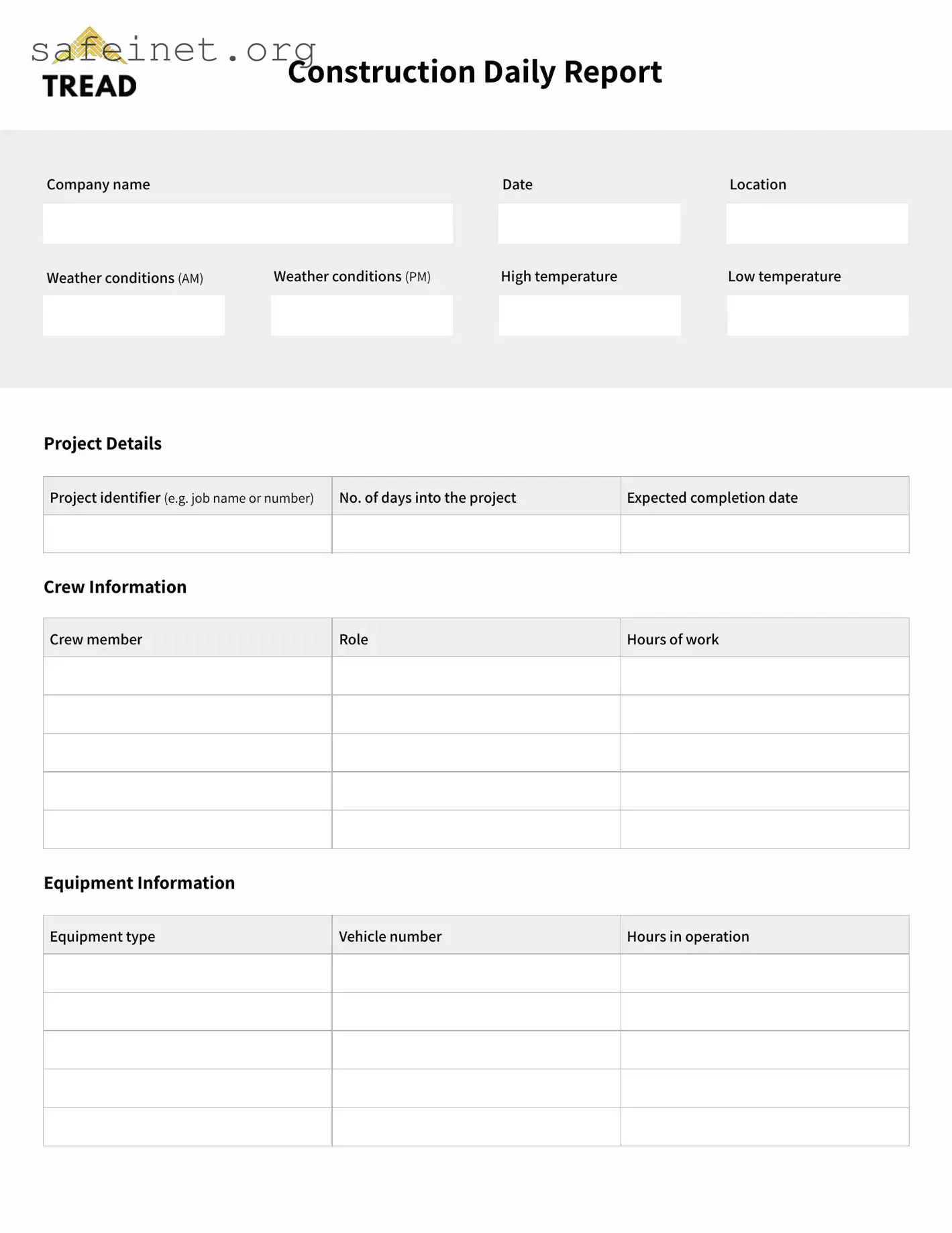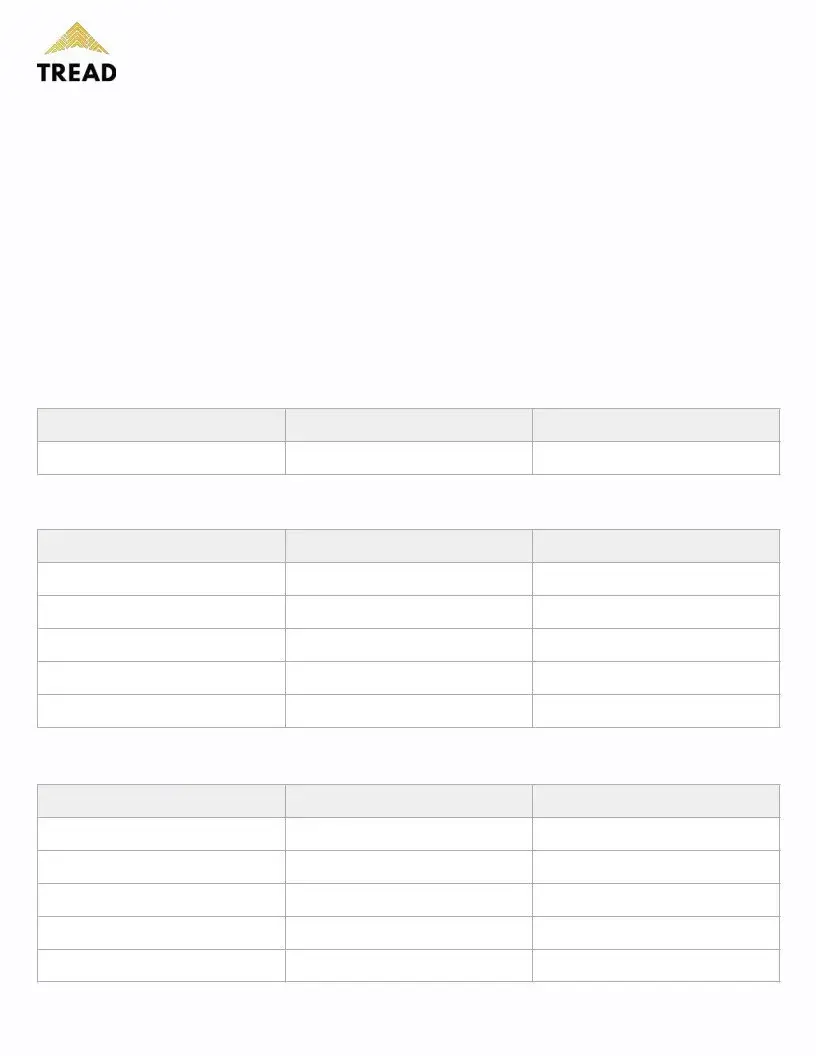What is a Construction Daily Report form?
A Construction Daily Report form is a document used on construction sites to record daily activities, weather conditions, crew information, equipment status, materials delivery, and any notable events or issues. It helps keep all stakeholders informed and serves as a legal record of work performed each day.
Why is it important to complete a Construction Daily Report?
Completing a Construction Daily Report is essential for various reasons. It promotes accountability by documenting who was present and what transpired each day. This report can also help resolve disputes and confirm compliance with safety and quality standards. Additionally, it provides valuable insights for project management and scheduling.
What should be included in a Construction Daily Report?
A thorough Construction Daily Report should include the company name, date, and location. Document the weather conditions for both AM and PM as well as the day’s high and low temperatures. Important project details like the project identifier, number of days into the project, and expected completion date should also be included. The section on crew information outlines roles and hours worked. Additionally, details on equipment, materials delivery, any issues or delays, visitors, and safety inspections must be recorded.
How often should a Construction Daily Report be filled out?
The Construction Daily Report should be filled out every day that work is conducted on the site. Consistency ensures that all activities and incidents are documented, creating a reliable resource for tracking progress and challenges throughout the project.
Who is responsible for completing the Construction Daily Report?
Typically, the project manager, site supervisor, or foreman is responsible for completing the report. However, anyone working on-site who has access to the necessary information can contribute, ensuring accuracy and comprehensiveness.
What happens if a Construction Daily Report is not completed?
If a Construction Daily Report is not completed, critical information may be lost, leading to misunderstandings and disputes later on. It could also result in issues with compliance, insurance claims, and overall project accountability. Keeping detailed records protects everyone involved.
Are there any specific formats for the Construction Daily Report?
While there isn't a one-size-fits-all format, most Construction Daily Reports contain standard sections such as project details, crew information, equipment data, delivery details, and issues or delays. Many companies may create their own templates to suit their specific needs while maintaining the essential components.
Can Construction Daily Reports be filed electronically?
Yes, many companies now opt for electronic reporting systems. Using digital formats allows for easier data storage, quicker access, and enhanced sharing capabilities among team members. Electronic reports often include the same sections as traditional paper reports and can be customized as necessary.
What should be done with the completed Construction Daily Reports?
Once completed, Construction Daily Reports should be stored securely, either in physical files or electronically. These documents should be readily accessible for review by project managers, stakeholders, and auditors. Regularly reviewing past reports can help identify trends and improve future project planning.
What should I do if there is an incident reported in the Construction Daily Report?
If an incident is reported, it is crucial to document the details clearly, including what occurred and the response. Follow your company’s protocols for incident management, which may include notifying safety supervisors, conducting an investigation, and implementing corrective actions. Ensure that all relevant parties are informed and that proper follow-up actions are taken.


